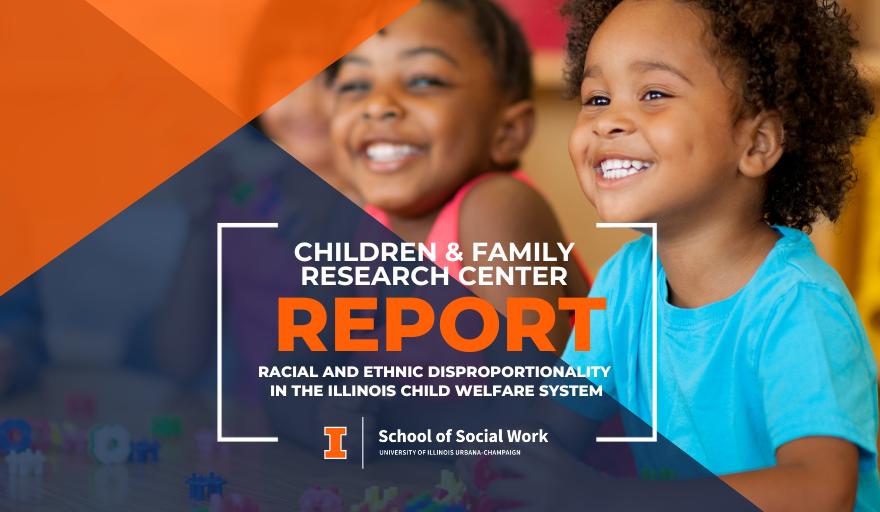CFRC Releases New Report on Racial and Ethnic Disproportionality in the Illinois Child Welfare System
October 25, 2023

About the Report
Racial and ethnic disproportionality in the child welfare system is a pressing concern that affects children in Illinois and across the United States. The Children and Family Research Center (CFRC) at the School of Social Work, University of Illinois Urbana-Champaign, has taken a significant step in assessing this issue by releasing its latest report, which examines the extent of disproportionality among children in several racial and ethnic groups in the Illinois child welfare system over a seven-year span (2016-2022). This report assesses racial disproportionality at the state and regional levels, providing a comprehensive view of the situation in Illinois.
The FY2023 Report on Racial and Ethnic Disproportionality in the Illinois Child Welfare System
The CFRC utilizes data from the Illinois child welfare system to compute the Racial Disproportionality Index (RDI), a metric that quantifies the amount of disproportionality experienced by children of various racial and ethnic backgrounds at ten child welfare outcomes:
- Investigations
- Protective custodies
- Indicated investigations
- Intact family services
- Substitute care entries
- Placement instability
- Length of stay in substitute care
- Permanence through reunification
- Permanence through adoption
- Permanence through guardianship
Notable findings
- Black children are over-represented among all the child protection outcomes including investigations, protective custodies, indicated investigations, intact family services, and substitute care entries.
- Specifically, the RDIs for Black children at each of these child protection outcomes in 2022 were greater than 2.0, which means that the percentage of Black children involved in the child protection system is more than twice their percentage in the Illinois child population.
- Disparities among Black children vary by region, with the Northern IL region experiencing the highest level disproportionality within the state.
- Once they entered foster care, Black children are over-represented in placement instability and lengthy stays in substitute care, reflecting systemic challenges that need attention.
- Conversely, once White children enter foster care, they are under-represented in placement stability and stays in substitute care for 48 months or more.
- Latinx and Asian children are under-represented in most indicators, with further analysis needed to understand the protective factors at play.
Upcoming B.H. Briefs
In addition to this report, CFRC will be releasing a series of B.H. Briefs to provide accessible insights into critical issues within child welfare in Illinois. These briefs will offer concise, 4-6 page summaries focusing on key findings from the full report, making it easy for stakeholders to understand and engage with the data and findings.
Three B.H. Briefs are already available, covering topics such as the relationship between length of stay in substitute care, child race, and region; risk of harm in Illinois and its connection to child safety; and the placement of Illinois children in out-of-state group homes and institutions.
Watch for more upcoming B.H. Briefs on topics like racial disproportionality in reunification, adoption, and guardianship, as well as the safety of children served in intact family cases. These briefs aim to inform and promote discussion on these vital child welfare issues.
For the complete CFRC report and the latest B.H. Briefs, visit the CFRC website to access valuable resources that contribute to a deeper understanding of racial and ethnic disproportionality in the Illinois child welfare system.